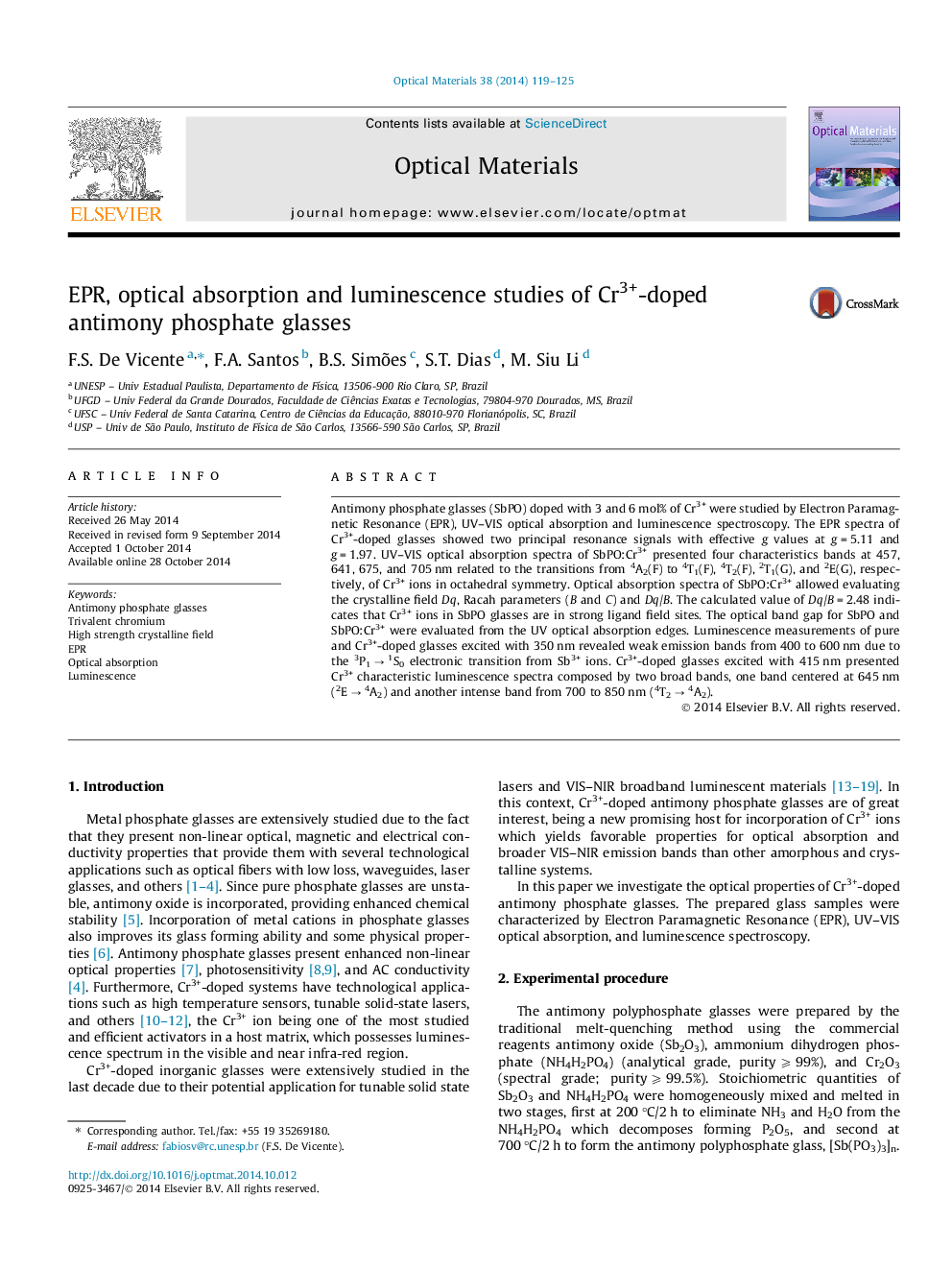| کد مقاله | کد نشریه | سال انتشار | مقاله انگلیسی | نسخه تمام متن |
|---|---|---|---|---|
| 1494020 | 1510796 | 2014 | 7 صفحه PDF | دانلود رایگان |

• Cr3+-doped antimony phosphate glasses were prepared.
• EPR, optical absorption, and photoluminescence were studied in these glasses.
• EPR revealed resonance signals g = 5.11 and g = 1.97.
• Optical absorption spectra allowed evaluating the Racah parameter Dq/B = 2.48.
• Dq/B indicates that Cr3+ ions are in strong crystal field in this glass system.
• Glasses excited with 415 nm showed intense Cr3+ emission from 600 to 850 nm.
Antimony phosphate glasses (SbPO) doped with 3 and 6 mol% of Cr3+ were studied by Electron Paramagnetic Resonance (EPR), UV–VIS optical absorption and luminescence spectroscopy. The EPR spectra of Cr3+-doped glasses showed two principal resonance signals with effective g values at g = 5.11 and g = 1.97. UV–VIS optical absorption spectra of SbPO:Cr3+ presented four characteristics bands at 457, 641, 675, and 705 nm related to the transitions from 4A2(F) to 4T1(F), 4T2(F), 2T1(G), and 2E(G), respectively, of Cr3+ ions in octahedral symmetry. Optical absorption spectra of SbPO:Cr3+ allowed evaluating the crystalline field Dq, Racah parameters (B and C) and Dq/B. The calculated value of Dq/B = 2.48 indicates that Cr3+ ions in SbPO glasses are in strong ligand field sites. The optical band gap for SbPO and SbPO:Cr3+ were evaluated from the UV optical absorption edges. Luminescence measurements of pure and Cr3+-doped glasses excited with 350 nm revealed weak emission bands from 400 to 600 nm due to the 3P1 → 1S0 electronic transition from Sb3+ ions. Cr3+-doped glasses excited with 415 nm presented Cr3+ characteristic luminescence spectra composed by two broad bands, one band centered at 645 nm (2E → 4A2) and another intense band from 700 to 850 nm (4T2 → 4A2).
Journal: Optical Materials - Volume 38, December 2014, Pages 119–125